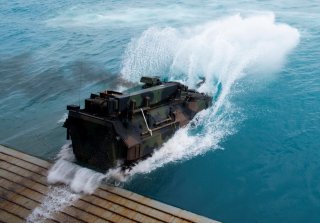History Question: Why Can't There Ever Be Another D-Day Invasion?
Are large amphibious assaults too difficult to pull off anymore?
Key point: The resources neeeded for that kind of attack would all be wasted if a modern-day defender used nuclear weapons. Besides, even lower-tech enemies have access to deadlier defensive weapons such as long-range anti-ship missiles.
Even 70 years later, the Allied invasion of Nazi-occupied France on June 6, 1944—D-Day—is awe-inspiring. The statistics alone boggle the mind. Seven thousand ships, 12,000 aircraft and 160,000 troops. All concentrated on a small slice of the French coast.
It was incredible. It was magnificent. It was terrible.
And it will never happen again.
In fact, it hasn’t happened again. History’s last major amphibious assault was more than 60 years ago, when U.S. Marines landed at Inchon, South Korea, in September 1950.
What changed?
The death knell for massive seaborne invasions sounded on Aug. 6, 1945, when Hiroshima became the first victim of a new weapon called the atomic bomb. One didn’t have to be an Adm. Chester Nimitz to realize that a bomb that could destroy a city could also wipe out a fleet.
The U.S. Navy tested the effects of nuclear weapons on ships at Bikini Atoll in 1946. An aircraft carrier, a surrendered Japanese battleship, plus assorted light warships, transports and landing craft anchored at ground zero. Two 23-kiloton nuclear warheads exploded.
Imagine a nuclear weapon detonating amid a D-Day-size armada, and you’ll understand why giant invasion fleets fell victim to the Nuclear Age.
But D-Day wasn’t just an amphibious landing. It was an amphibious assault. The troops didn’t merely wade onto a beach. They fought their way through German defenses.
The first wave at Omaha Beach, immortalized in Saving Private Ryan, suffered more than 50-percent casualties. And that was facing World War II weaponry such as rifles, machine guns and unguided artillery. Not modern smart weapons.
Even irregular armies like Hezbollah have land-based anti-ship guided missiles. In the Falklands in 1982, Argentine planes fired Exocet missiles that sank several British ships. And the Exocets are nothing compared to today’s supersonic missiles like the Russian Yakhont—not to mention Chinese ship-killing rockets.
It’s not that amphibious landings will never happen again. Sometimes going in by sea, as the British did in the Falklands, may be the only way to seize territory. The U.S. still has dozens of amphibious assault ships, each of which can carry hundreds of Marines.
But a D-Day invasion fleet? Tens of thousands of troops storming ashore under heavy enemy fire?
If you want to see that, watch Saving Private Ryan.
This appeared in WarIsBoring back in 2014 here.
Image: Reuters

